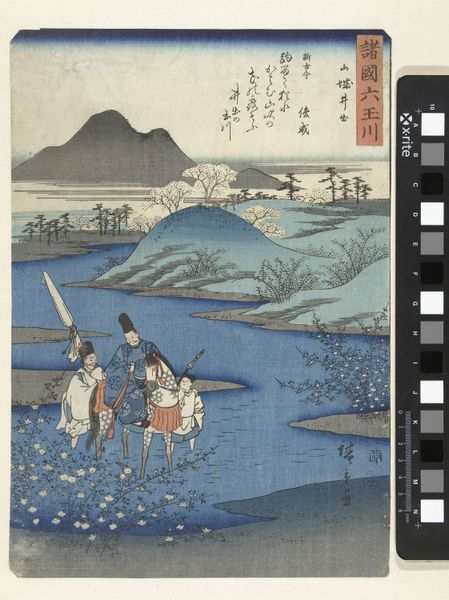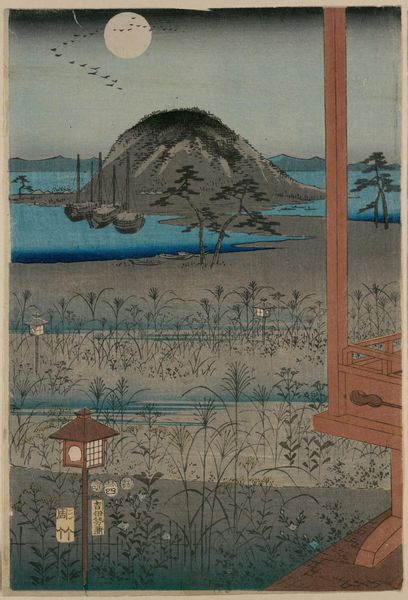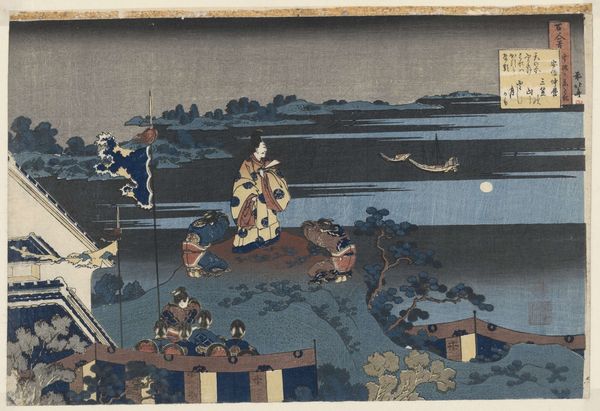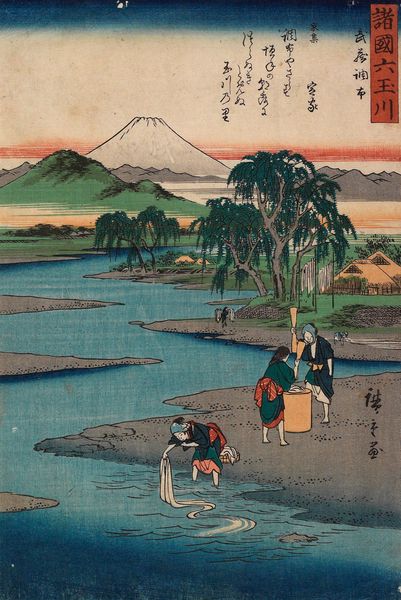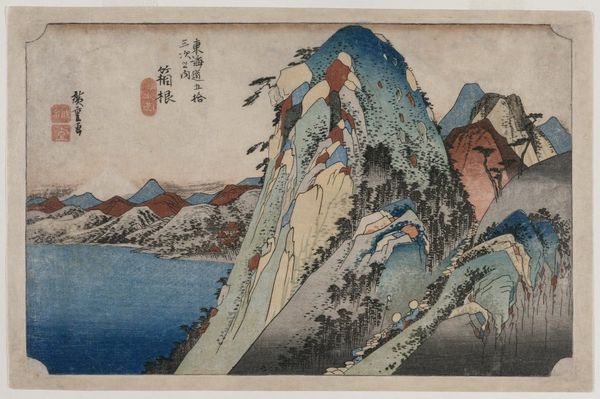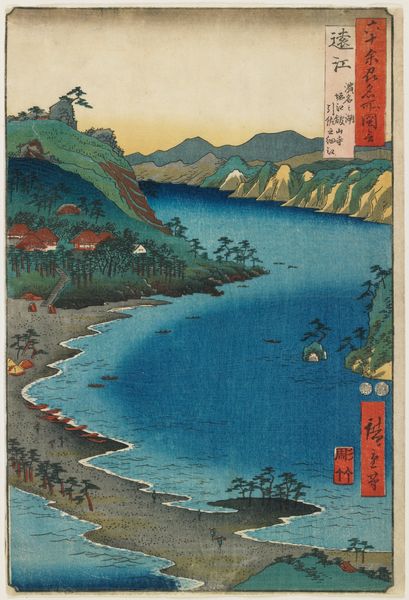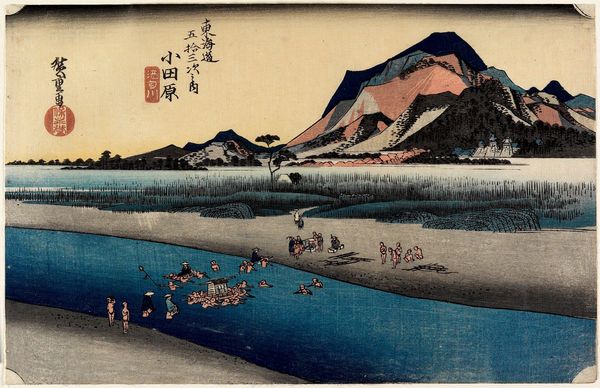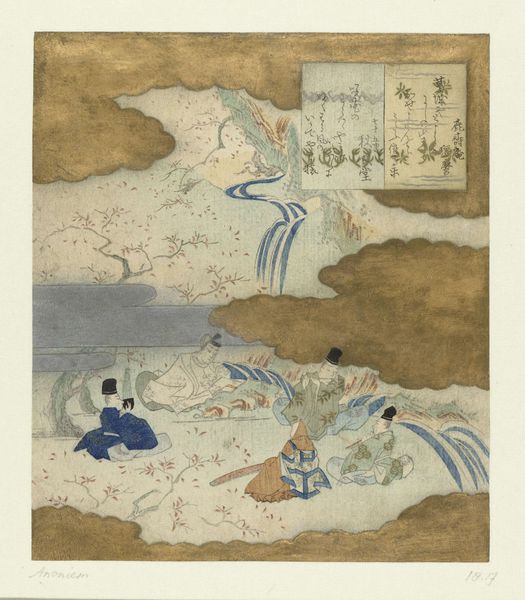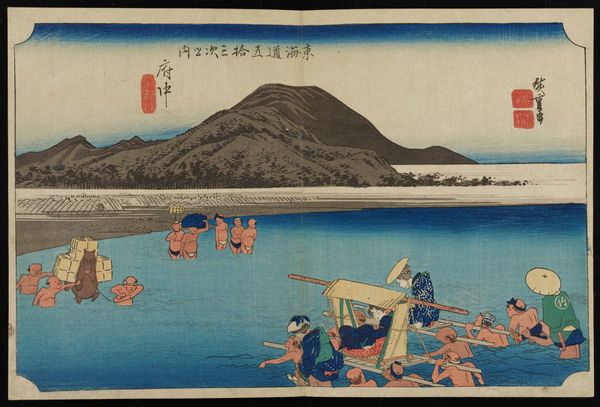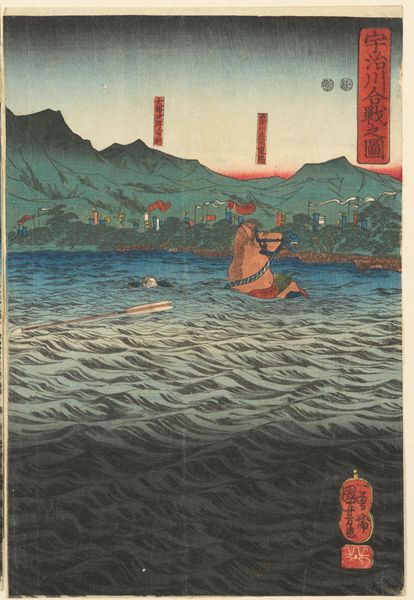
print, woodblock-print
#
muted colour palette
# print
#
landscape
#
ukiyo-e
#
woodblock-print
Dimensions: height 328 mm, width 229 mm
Copyright: Rijks Museum: Open Domain
Curator: This woodblock print by Utagawa Hiroshige, created in 1857, is entitled "Noda, in de provincie Mutsu" and can be found here at the Rijksmuseum. The image forms part of his series “Sixty-odd Famous Provinces.” What is your initial response to it? Editor: It’s striking how serene the whole scene appears. The muted blues and grays really set a calm, contemplative mood. I wonder about the woodblock process; how many blocks did it take to achieve these subtle tonal variations? Curator: Ah, but those muted tones themselves carry meaning. The monochrome blue became quite fashionable and references classical Chinese painting aesthetics, signaling cultivated taste and a reflective temperament. Notice the flock of birds heading to the right – suggesting forward movement. Editor: Right, there's definitely an intentionality to it. You know, thinking about the process of creating multiple prints, I can’t help but wonder about the lives of the artisans involved. Who prepared the wood? How did the collaborative processes work and how many copies were actually produced, distributed, and ultimately, consumed by the public? Curator: It's amazing how a single print contains those echoes of history and process. I focus so intently on what these images mean. See how the arrangement of mountains, river, and human figures perhaps indicates our transient position in the world. They embody Buddhist principles of harmony, for me. Editor: And yet, this harmony was carefully constructed. Hiroshige likely sketched scenes repeatedly and planned a palette and blocks that would appeal to specific segments of the population. We must see through a visual representation that might appear peaceful while the economics underneath were far more demanding for some. Curator: Your viewpoint gives real-world depth to my interpretation. Now I wonder what meaning a late Edo-period viewer extracted. Editor: The print, I feel, acts almost as an economic artifact. Understanding its journey illuminates broader production contexts within the art market of the time. Curator: We began viewing Hiroshige’s creation very differently, focusing on method versus metaphysics. Each allows us a peek into the past, through color and line.
Comments
No comments
Be the first to comment and join the conversation on the ultimate creative platform.
